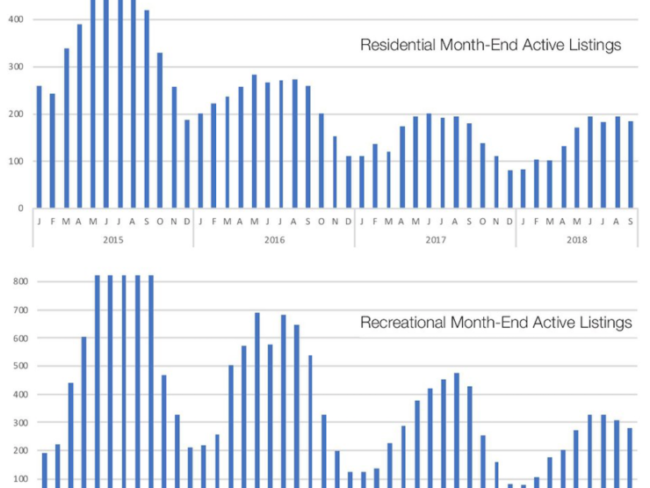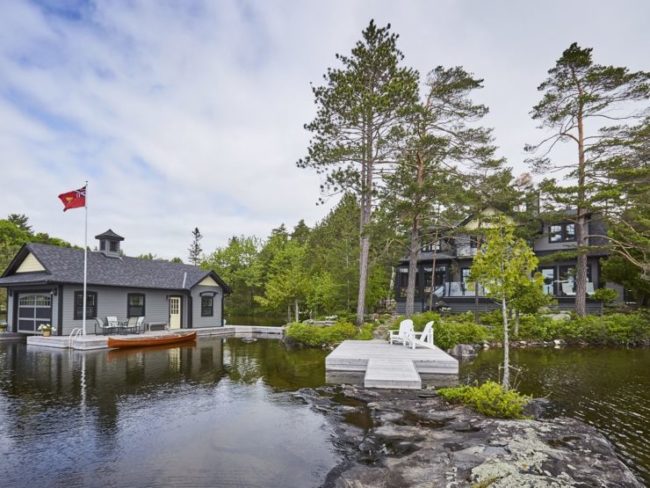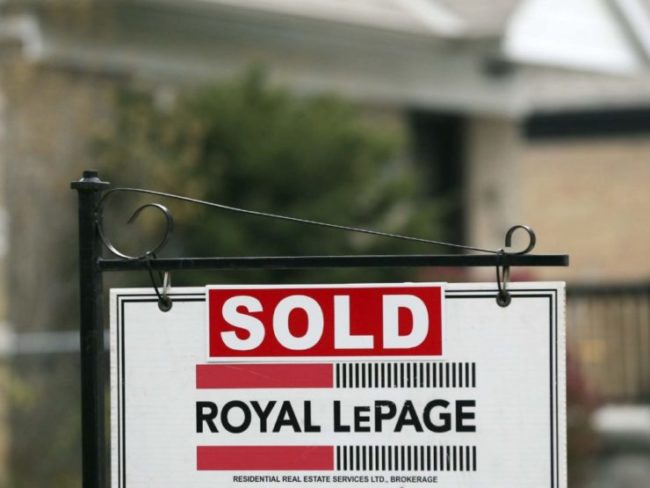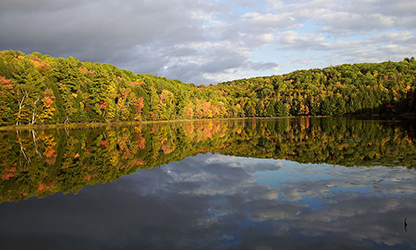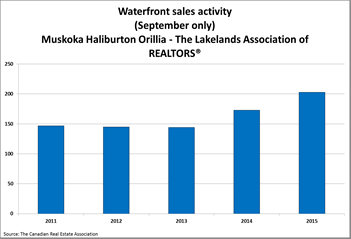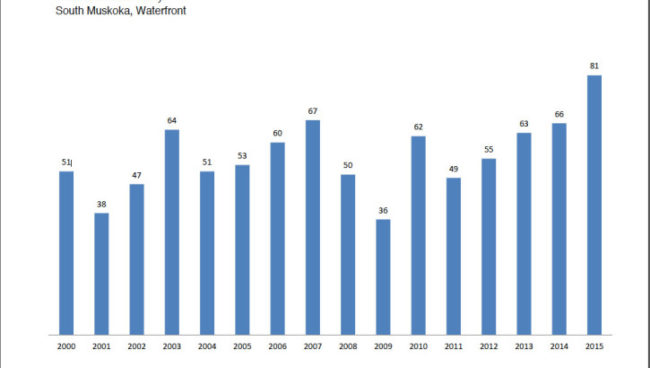Muskoka Cottage Safety During the Fall and Winter Seasons
Protect your cottage – and your sanity over the long months’ of absence – with good quality locks and security system, thorough fall maintenance, and regular winter inspection.
(Muskokaregion.com September 2018)
While we are seeing an increase in four-season cottages, the vast majority of them are closed up tight come November and left vacant and largely unattended until spring. Over the winter, cottage owners will often worry and fret over their beloved summer retreat, now enclosed in a barren landscape of snow, feeling helpless in the event that something goes wrong.
It needn’t be that way. With some effort and modest cost, your cottage can be protected in your absence.
The long absence of property owners and dearth of watchful neighbours over the course of the winter makes cottages tempting targets at this time of year. While you can never completely protect your cottage from theft, there are steps you can take to minimize the risk.
For many, the cottage is a rustic place where one goes to immerse in nature and escape modern technology, but modern technology is vital in protecting your investment, as well. Two technologies in particular – locks and cameras – have seen advances in recent years that help secure your cottage while you’re away in ways that just weren’t possible before.
A lock and key is just the beginning for advanced lock systems of today. There are a variety of more advanced options available. “There are a lot of people coming and going at the cottage – contractors, service people, delivery people, guests – so it’s about providing assurance for the property owner,” Jayne McCaw of Jayne’s Cottages says of investing in a good lock system. McCaw specializes in renting out higher-end cottages and is a cottage concierge, providing information and facilitating anything a vacationer might need, from boat rentals to private chefs. As such, she firmly has the pulse of what makes for a care-free cottage experience. “At the very minimum,” she continues, “get a standard lock box.”
Today’s hi-tech locks can be monitored and controlled remotely from an app on your phone, which allows you to check your cottage remotely from anywhere. Also available are deadbolt lock systems that require the entry of a code on a keypad, which allows you to give guests or caretakers their own access codes and later delete them – no more giving out keys that may be lost, stolen or copied. There are even locks that allow you to have codes that are only good for certain days and times – ideal if you need to give access for service calls.
Another technology that’s come far in recent years, thanks in large part to the advancements in connectivity and apps, is that of cameras and security systems. “People lock up their cottage and leave it unattended for months on end. Having a camera security system gives them a sense of comfort when they are gone because they can actually see what’s going on and know that all is well,” says Louis Liadis, owner of Muskoka Cottage Sitters. Being around cottages is Liadis’s passion, so his customers know their seasonal homes are in good hands.
Today’s security systems don’t just alert us to break-ins. Many also monitor temperature drops, which can help prevent frozen pipes or loss of power. Some systems directly alert law enforcement, heating and plumbing pros, or caretakers in the event of emergency. Infrared cameras that take crystal clear nighttime photos without the give-away of a flash ensure that burglars can be easily identified later without them even knowing they’d first been caught on camera. This naturally makes would-be thieves more cautious, so even the presence of a security company’s logo on a sticker or sign displayed outside a cottage proves a deterrent.
It’s ideal to find a local business that can help you choose the right setup for your cottage and who can be there to make adjustments and ensure the system is operating properly at all times.
“Apps and electronic security systems are great, but you still need someone to respond to them. If you’re in Toronto and you get an alarm at 3 a.m., what are you going to do? What can you do? That’s where a property management company provides real peace of mind. We’re hooked into our clients’ alarm systems and respond immediately when they go off,” explains Liadis. “We’re much closer and have the contacts to immediately address the issue.”
Sure, it’s amazing how today’s technology allows for remote control of cameras and locks, enabling you to secure your cottage or see what’s going on by pulling out a phone in your pocket. But there are still plenty of low-tech steps you can – and probably should – take to discourage any security breach.
The most important is to make the cottage look occupied. “One of the reasons so few of the cottages I tend to have been broken into is probably partially because it looks like people are around,” Liadis suggests. Keeping the yard tended, leaving a magazine open or a scarf or jacket on the couch, indoor lights on timers, and outdoor lights triggered by motion do wonders to make it appear as if people are around.
“The most important thing is to keep the driveway and walkway plowed,” explains McCaw. “This makes it look as if people are regularly using the cottage. In fact, some fire codes and property insurance policies demand it to allow fire departments to make it in should a fire break out.”
“Let neighbours know when you are coming and going, and ask them to check on the property in your absence,” she continues. “Their presence may deter thieves and they act as an additional set of eyes watching over your property.”
Alcohol and firearms are preferred targets for burglars, so take them home with you at the end of the season. Pull curtains and blinds over windows so prying eyes cant peak in and see whatever valuables – particularly electronics – are in the cottage.
Security isn’t just about preventing break-and-enters, according to Liadis. “In 20 years, I’ve only had two of the properties I watch over broken into. The more common threat to a cottage over the winter is natural in origin – pipes bursting, damage from falling trees or snow load, and so on,” he says.
Most of the vital preventative work intended to protect the cottage from natural mishap is done during that final, frenzied autumn weekend when we close up the property for the year. You need a thorough plan of action.
Closing the cottage begins with cleaning up the yard, something every homeowner already does, but is more extensive when it comes to a seasonal property. Leaves and other debris left on your yard can redirect the flow of runoff towards landscaping or the cottage, or cause runoff water to pool which, if it freezes over the winter, can crack and shift concrete and other stonework. Leaves that pile up around the sides of the cottage encourage rodents looking for a place to nest, which may eventually find their way inside. Also, wet leaves become slick and pose a risk.
Thoroughly clean out eaves, otherwise water might back up and find its way into the cottage. While you’re up on the roof, inspect for any damage that might create a leak. Also, examine over-reaching trees for signs of weakness and trim any dead or dangerous branches. Inspect the cottage exterior for any entrances where mice, squirrels, bats and other animals might get in and seal any openings that are found.
Plumbing has traditionally been a source of anxiety for cottagers. Who wants to open the cottage next spring only to find that pipes froze and cracked over the winter months? Damage caused by such accidents can be severe. During closing, it’s important to make sure all pipes and drains are completely free of water. Open all valves and, using a Shop-Vac, blow the water out. There may still be water and moisture in the pipes, so pour some anti-freeze down the pipes. Some people go so far as to wrap pipes with insulation to give them added protection against the cold. If your cottage is older, you may have copper pipes and it’s recommended that all such pipes be replaced with plastic ones.
Ultimately, whether it’s protecting the cottage from natural mishap or human theft, nothing beats having a property caretaker. Just make sure the person doing the work is insured with CGL (Commercial General Liability).
“Using a qualified cottage care team takes the pressure off closing down the cottage, offers peace of mind that the property is being taken care of during the seven months from Thanksgiving until the May when you’re not around, and our presence helps deter theft,” explains Liatis. “We come in weekly throughout the winter and spring, and fill out a checklist of about 25 items, looking for everything from snow load to tree damage, fuel levels to temperature. You can sleep easy at night.”
Saying goodbye to your cottage in the autumn need not leave you full of dread for the winter to follow. Protect your cottage – and your sanity over the long months of absence – with good quality locks and security system, thorough fall maintenance, and regular winter inspection. A small price to pay for securing your beloved vacation property.




